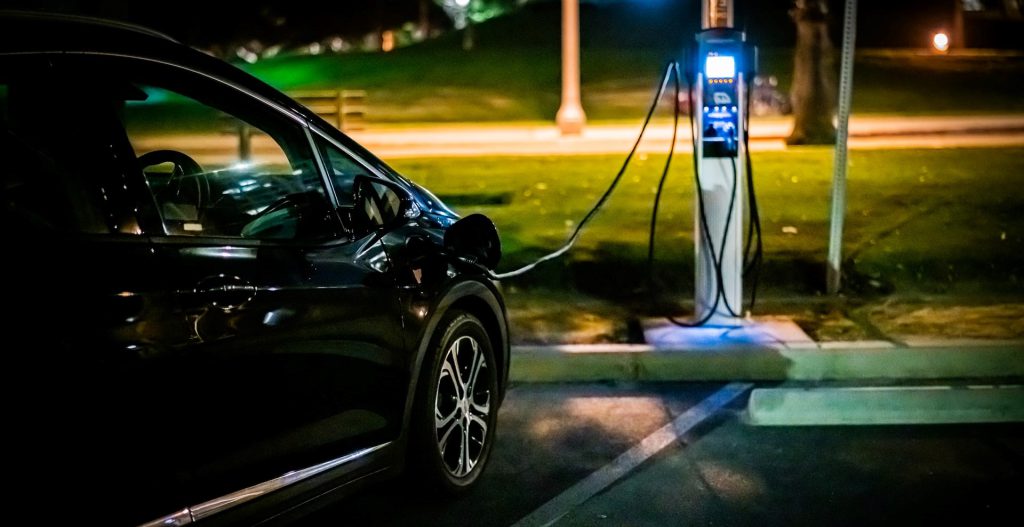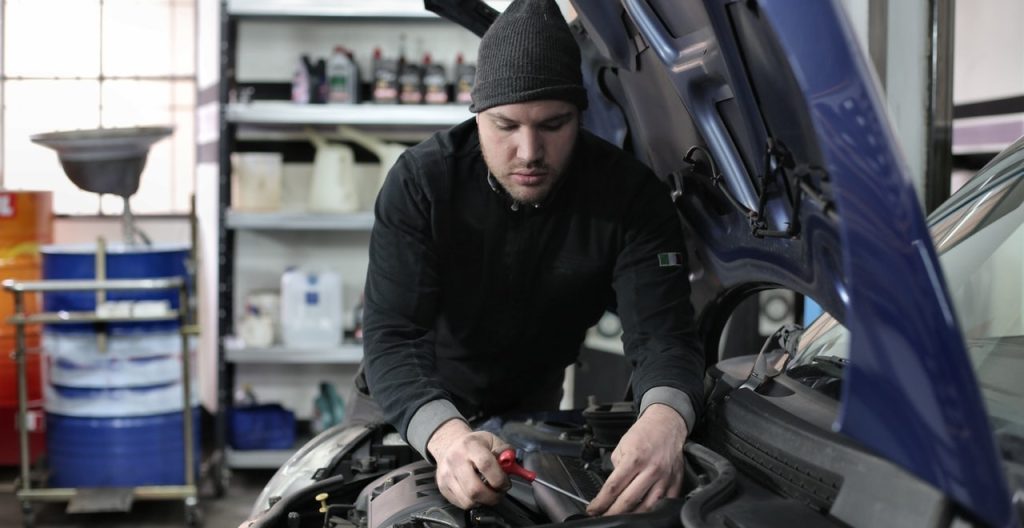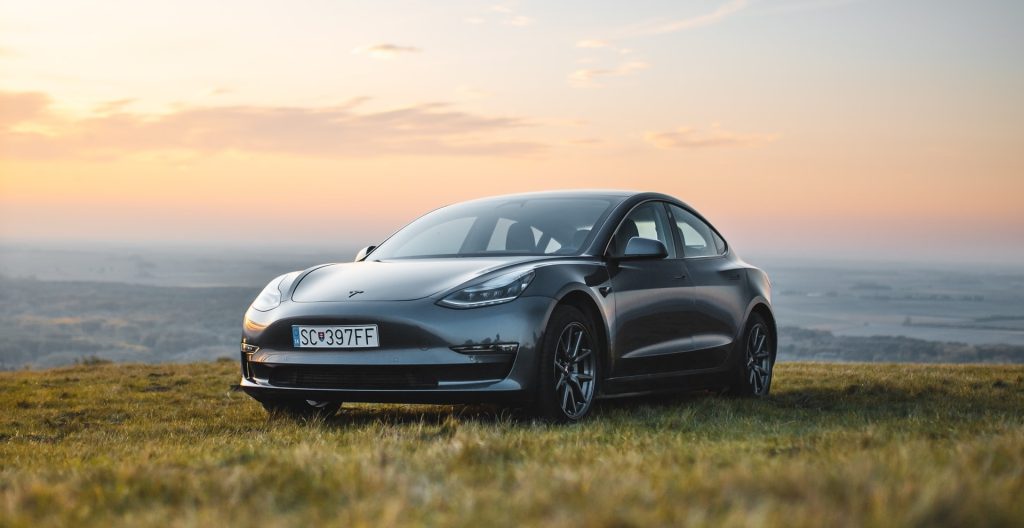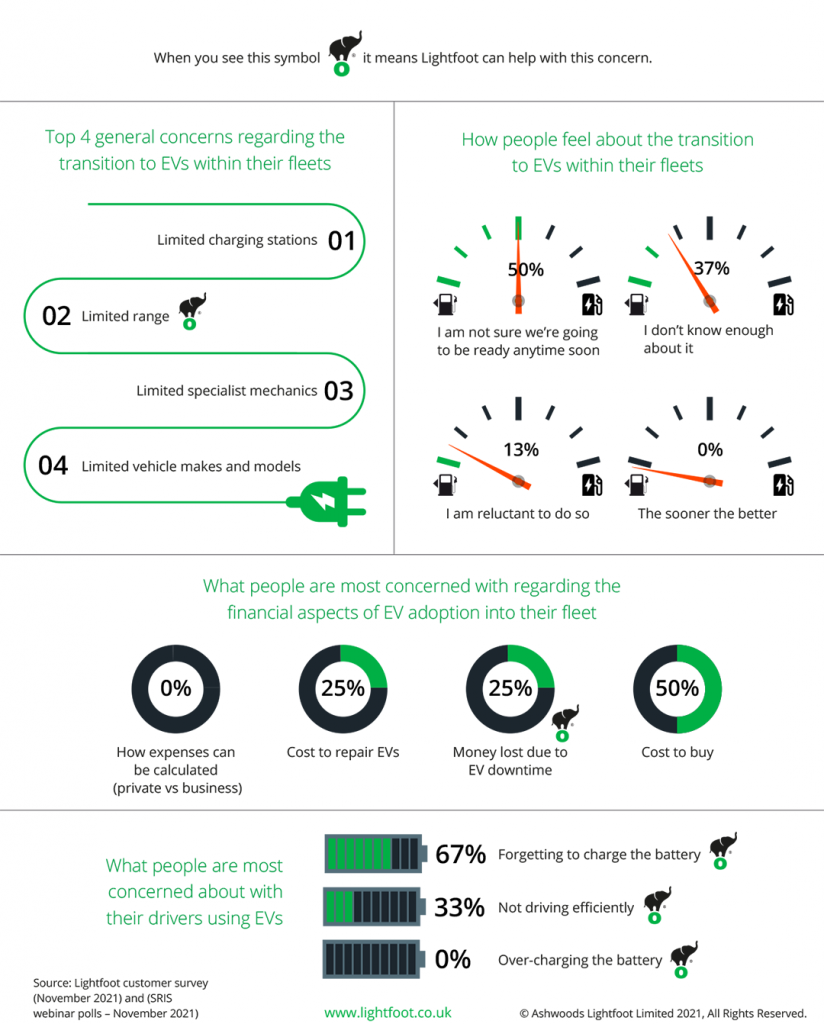The 4 Key Challenges of EV Fleet Transitions
With less than a decade to go until the sales of all new petrol and diesel cars, vans, and pickups are banned in the UK, the pressure is very much on for fleet operators to make a start in transitioning their fleets to electric vehicles (EVs).
Planning and preparing for the adoption of electric vehicles within a fleet is not without its challenges. It’s a complex issue with wide-ranging implications, from fleet finance and maintenance to national infrastructure and supply chains.
With this in mind, we set about identifying the key challenges facing UK fleets when it comes to switching to EVs by launching a survey where fleet operators could share their thoughts. Featuring insights from decision-makers across a range of industries, read on to discover their biggest concerns around EV fleet transition in the months and years ahead.
1. The lack of EV infrastructure

The limited number of charging stations throughout the UK was a clear worry amongst our respondents. With many drivers being unable to charge at home due to a lack of off-street parking, access to public charging stations will be essential. This is in addition to workplace and depot charging stations, which will require many commercial fleet operators to make significant changes to their facilities in order to ensure sufficient charging capacity.
Having only a modest network of public chargers to rely on brings with it its own anxieties, with 67% of the fleet managers we spoke to having concerns about their drivers forgetting to charge their electric vehicles. With fewer options available to a driver enroute, this could lead to issues and potential downtime if a vehicle has not been charged overnight. The reliability of these charging stations is also a cause for concern, as any unavailability caused by malfunction, vandalism, or increased demand could also cause problems for drivers with no other available chargepoints nearby. 25% of those we surveyed identified the money lost due to EV downtime as a key financial challenge of electric vehicle adoption within their fleet.
The good news? The number of charging stations in the UK is increasing all the time, with Government initiatives – such as the On-Street Residential Chargepoint Scheme (ORCS) – looking to boost these numbers even more. In fact, drivers are never more than 25 miles away from a rapid chargepoint anywhere along England’s motorways and major A roads, with an average of 2 at every motorway service area. This is hoped to grow to 6 per site by 2023, with larger motorway services set to have as many as 10-12.
The technology surrounding electric vehicle infrastructure is also advancing all the time, including new payment methods and charger location maps to make the transition that much easier for drivers and fleet managers alike. And for those fleets already enjoying the benefits of the Lightfoot system within their ICE vehicles, the transition to EV is even more seamless. Features such as the handy charge reminder via the Lightfoot app help to reduce the likelihood of EV downtime due to lack of charge, whilst the automated expense claims process makes for easy expense management for home or public charging.
2. The limited range of EVs

Range anxiety is one of the most commonly cited barriers to EV adoption, both privately and commercially. Those we surveyed were no exception, referencing the limited range of electric vehicles compared to their petrol and diesel counterparts as one of the major concerns when it comes to electrifying fleets.
Of course, this is heavily tied to the issue of insufficient infrastructure, as the fear of not being able to travel the required distance between charges is only exacerbated by the fact that having the ability to charge the vehicle when and where required is by no means guaranteed.
However, an important factor to take into consideration is that a lot of range anxiety now stems from outdated assumptions about the capabilities of EVs. Battery technology has come a long way since the first electric vehicles, with many of today’s models now offering enough range for a full day’s travel. The Tesla Model 3, for example, can deliver a range of 305 miles on one complete charge.
This common misconception about EV range highlights a broader issue – the need for greater education across the fleet industry about the realities of transitioning to electric vehicles. In fact, 37% of those in the industry who we reached out to admitted that they didn’t know enough about fleet electrification to be able to plan for such changes within their own fleets.
In particular, the education of fleet drivers will play a key role here, and in turn will help to improve vehicle range and dispel negative beliefs about EV limitations. Driver behaviour has a big influence on the range of electric vehicles, so formal training will likely be required to ensure fleets are making the best use of the battery in each vehicle.
Alternatively, an in-cab coaching solution such as Lightfoot has been shown to increase EV range by 20%, with the real-time driver training it delivers helping to ensure that fleets are benefitting from consistent performance and improved efficiency – something that 33% of respondents identified as a chief concern. In fact, Lightfoot is proven to maintain 90% of all drivers at a high performance level, creating a uniformity of driving style across fleets. By reducing the variation in driving styles and normalising the fleet at a safe and efficient standard, businesses will not only find that the range of their EVs is extended, but so too is the predictability of range throughout their entire fleet.
3. The need for specialist EV mechanics

Another big challenge facing the adoption of EVs in the UK is the emerging skills gap. Many of those that we spoke to regarding their concerns surrounding EV fleet transition noted that the lack of specialist technicians was a significant factor. And whilst the automotive industry at large is making a concerted effort to retrain and upskill the UK’s workforce, it’s predicted that by 2030, we could face a shortfall of some 35,000 EV technicians.
Although EVs have fewer moving parts than ICE equivalents, the technology is new and complex, with the high voltage systems requiring special training to offset the associated risks. Those fleets looking to continue with on-site servicing will also need to allow for adjustments beyond personnel –servicing areas will need to be repurposed to allow for safe battery storage, and even the most basic vehicle maintenance will require different operating practices.
It’s worth remembering though that fleet electrification will bring with it an array of positives when it comes to servicing, maintenance, and repairs (SMR). With fewer parts that can go wrong, EVs are cheaper to maintain than petrol and diesel vehicles – in fact, research suggests that electric vehicle maintenance costs may be as much as 50% lower. This is good news for the 25% of fleet professionals we interviewed who named the cost to repair EVs as a key financial concern.
As well as reduced costs, differences in the way that EVs are driven can mean fewer instances of wear and tear – for example, the regenerative braking systems help to reduce deterioration of brake pads and discs. Driver behaviour plays a significant role in this, as a more efficient driving style can drastically reduce the amount of damage done to a vehicle over time, helping to keep costs low and cut downtime. Installing fleet management software such as Lightfoot is therefore a must for those looking to move towards electric fleet vehicles, with the Lightfoot system proven to reduce vehicle degradation by as much as 40% through improved driver performance.
4. The poor choice of EV models

Lastly, the fourth barrier to electric vehicle uptake identified in our survey of fleet operators was the limited availability of makes and models – particularly for van fleets and those operating heavy vehicles. There simply isn’t enough choice out there right now to allow existing fleets to trade in their ICE vehicles for an electric equivalent, with many electric vans not yet offering the performance capabilities required to meet normal service levels.
Whilst there is significantly more choice for those looking for electric cars, it is still a somewhat exclusive market, leading to higher upfront costs for all-electric models compared to their internal combustion engine counterparts. Half of those we spoke to about the challenges of EV adoption saw the cost to buy EVs as a significant financial deterrent. Where money is less of an issue, it’s the limited availability of these vehicles in large numbers that will impede fleets looking to make the change and push back their planned transition to EVs.
It’s worth remembering however that the EV market is still relatively new, and advances are being made all the time. As production processes and battery technologies become more efficient, prices will continue to fall, and new models and manufacturers will continue to emerge. As a rapidly developing market, the EV sector is set to shake up the automotive industry on a huge scale, with many vehicle manufacturers now having made ambitious commitments to step up their EV output – or phase out ICE vehicles altogether. Alongside this, initiatives such as the Government’s Automotive Transformation Fund are all set to strengthen the UK’s electric vehicle supply chain, ensuring that demand is well and truly met in the years ahead.
Summary
All in all, it’s clear that there’s a great deal of work to be done in making the switch to EVs, including extensive research and careful planning. With many challenges to overcome, it’s understandable that 50% of our respondents felt it was unlikely that their fleets would be ready to make the change any time soon.
The real key in mitigating the obstacles of fleet electrification is timing. The electric future of the fleet industry is undoubtedly a net positive – not only will it drastically help to reduce the industry’s environmental impact, but it will also bring benefits such as savings on fuel costs and a reduced need for maintenance. However, whilst the Government’s ambitious 2030 deadline may have sparked a sector-wide panic, it’s evident that taking the time to prepare and making gradual changes will be the better option for many.
There are a lot of practical decisions to be made that will have far-reaching implications for businesses – whether it’s choosing the right EV models, upgrading on-site facilities, or upskilling an existing workforce – and many fleets may find the best solution is to operate EVs and ICE vehicles alongside one another during a carefully phased transition.
Here at Lightfoot, we’re committed to helping fleets make an immediate difference to their carbon footprint so that they’re better prepared to embrace electric vehicles in the future. Our unique in-cab technology connects drivers to their vehicles, offering real-time feedback and delivering long-term results through positive engagement and a rewards-based system. By improving driver performance, we’ve helped businesses such as Asda, Tesco, and Virgin Media reduce fleet emissions by as much as 15%.
By delivering real and lasting change across your vehicle operations, the Lightfoot system can put you well on your way to hitting sustainability targets well in advance of having an EV fleet. This means you can focus on electrifying your fleet at a pace that works for your business, safe in the knowledge that you’re already working hard to reduce the environmental impact of your vehicles and maintain a cleaner, greener fleet. And when it comes time to make the switch, our flexible fleet management solution will make the change with you, so you can ensure that your electric fleet vehicles are as efficient as they can be too.
If you’d like to learn more about our services and how we can help ease the challenges of EV adoption, call us today on 01392 340 419. Alternatively, book a free, no-obligation trial of the Lightfoot device to experience the instant impact of our technology first-hand.
Key Concerns Regarding The Electrification of Fleets Infographic
Please see the infographic below for an overview of the challenges surrounding EV fleet transitions discussed in this article:
